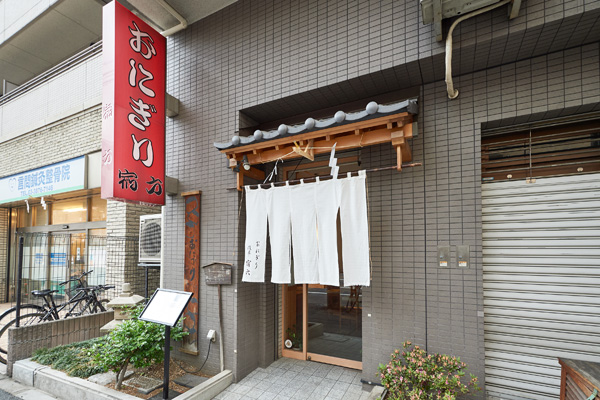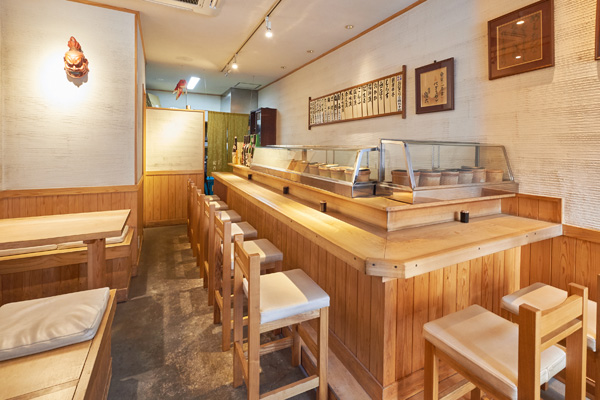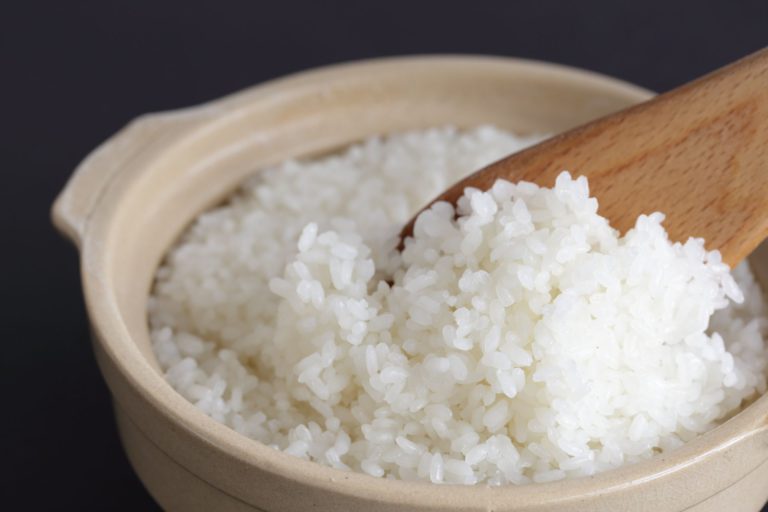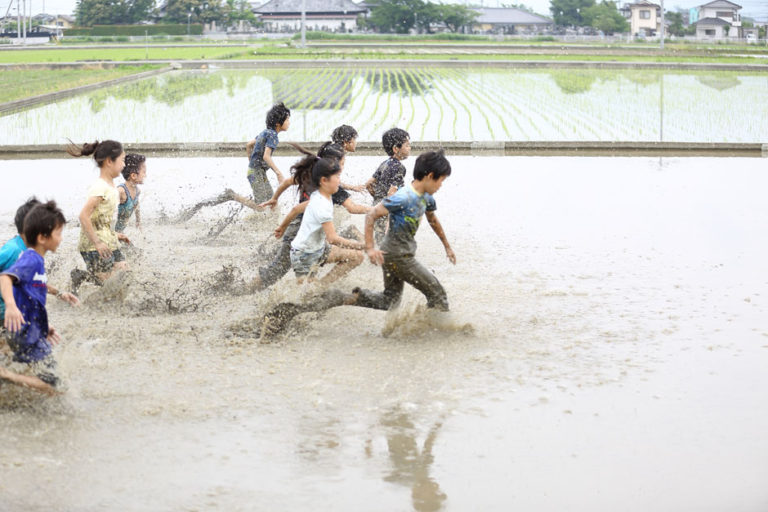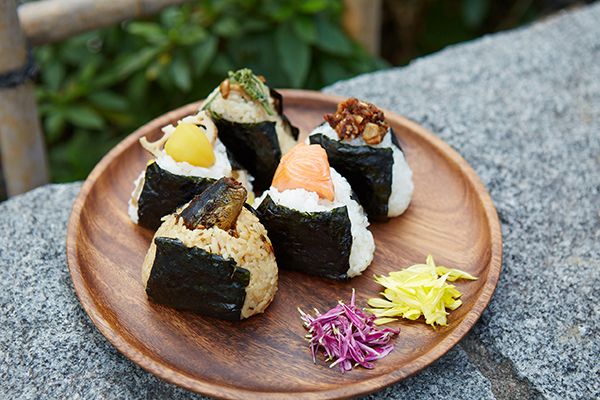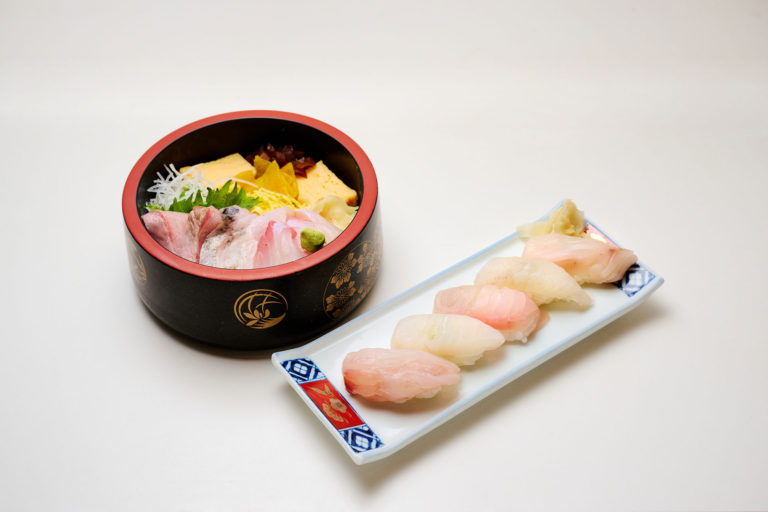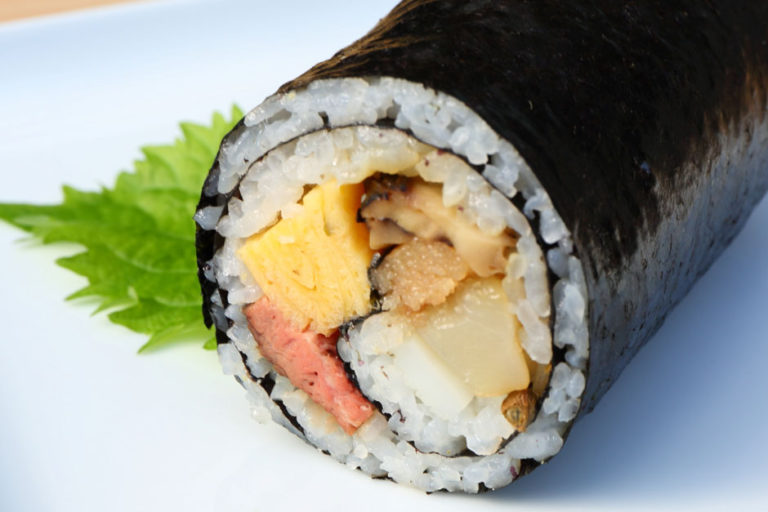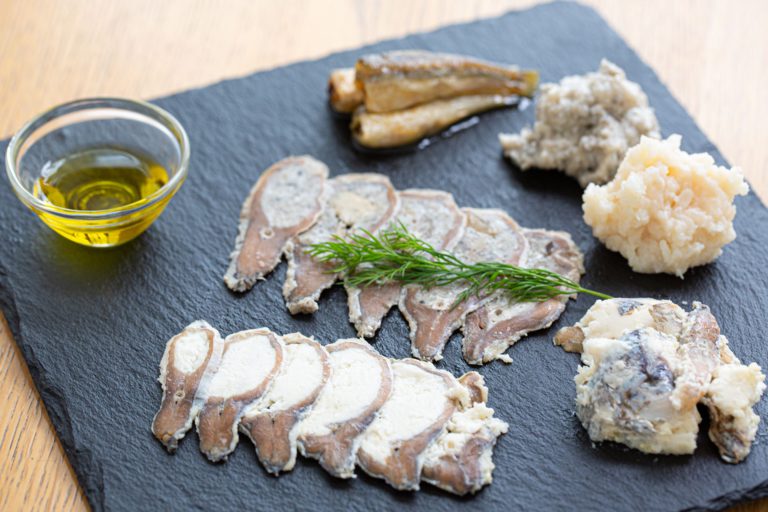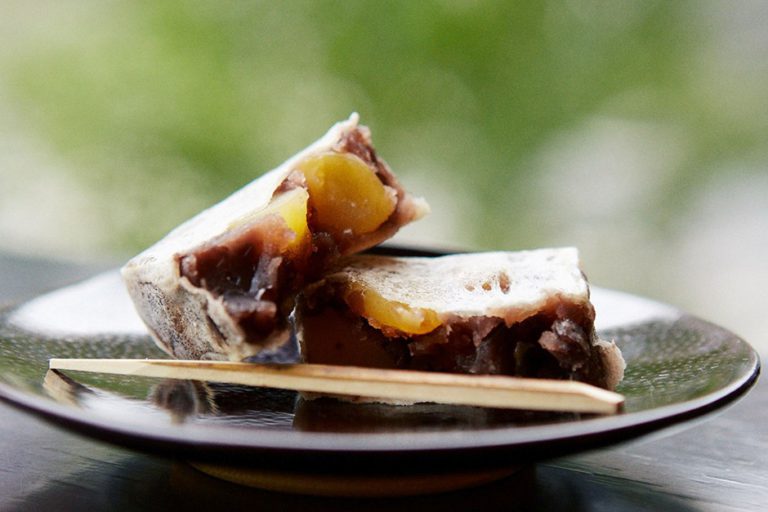A Staple of the Japanese Diet, Shaped by a Person’s Hands
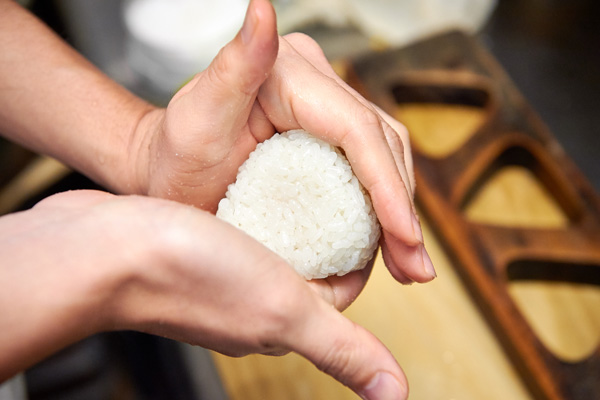
However, rice balls are enjoyed in all kinds of occasions: put into bento boxes eaten every day, eaten at picnics, dinners and can even be found easily at convenience stores. It is a food that has deeply rooted itself in Japanese food culture.
Rice balls through the times
Rice balls have a long history. They are said to have found their beginnings as offerings, evidenced by blocks of rice found at ruins dated to about the first century B.C. They may also have originated as steamed sticky rice balls called tonjiki, a food aristocrats gave to servants at banquets during the Heian period (794–1185).
It was during the Kamakura period (1185–1333) that rice balls became commonly eaten by the people. Because they were highly portable, that they could be held by hand and eaten anywhere; it is said that samurai liked using them as field rations. People started to wrap rice balls with nori seaweed mid-Edo period (1603–1868), when nori seaweed began to be cultivated in Tokyo Bay. They added additional flavor to the rice balls and they became easier to eat, as the grains of rice no longer stuck to your hands and the format has remained the same to the present day.
Asakusa Yadoroku, the oldest rice ball restaurant in Tokyo
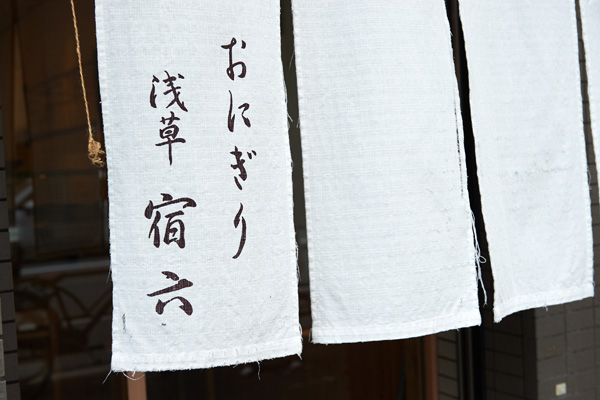
In search of what makes a delicious rice ball, we visited Asakusa Yadoroku, a restaurant specializing in rice balls. It first opened in Asakusa in 1954 and is a very stylish restaurant. Just like at a sushi restaurant, diners sit at the counter, choose ingredients of their choice from the glass showcase, which the chef will shape into a rice ball for you to enjoy fresh. The restaurant also serves alcoholic drinks at night, but they have a one glass per person limit, because the restaurant’s primary goal is to enjoy pairing them with the rice balls.
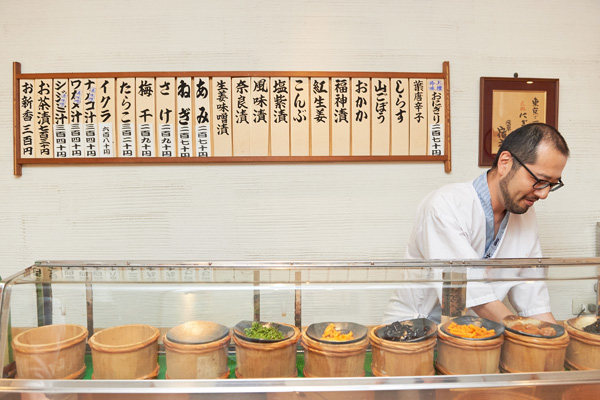
We asked Yosuke Miura, third-generation chef of Yadoroku, to make us rice balls. Yadoroku uses a wooden mold at the start of the process, but only as an aid to help place ingredients cleanly in the center of the rice. The Yadoroku style is to always hand-make the rice balls. The rice balls were soft, not too tightly squeezed and pleasantly broke up in our mouths with every bite.
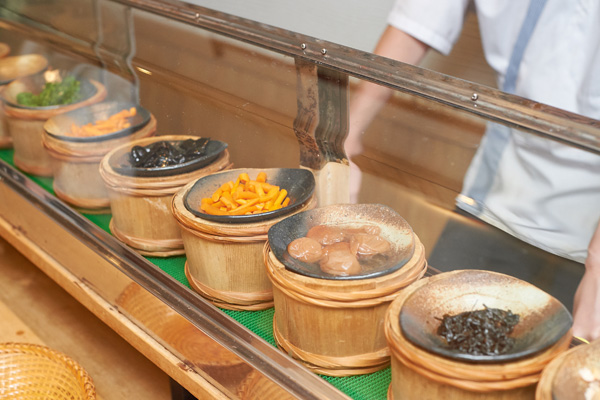
When Yadoroku first started, white rice was a premium ingredient. The founder, Miura’s grandmother, started the rice ball restaurant in Asakusa, Tokyo, one of the busiest districts of Tokyo, thinking that everyone would love their rice balls and that business would do well.Approximately 20 ingredients are always stocked at the restaurant, including popular fillings like salmon, pickled plums, bonito flakes in soy sauce and cod roe. Traditional ingredients, like flavored baby shrimps, pickled root mountain vegetables, and ginger pickled in miso are also on the menu. Most of the ingredients had been selected by the founder from all across Japan, and have not changed much since the restaurant opened. The restaurant only uses Edomae branded nori seaweed to wrap the rice balls.

As for the rice, Miura says he samples different types of freshly harvested rice each year and selects the one he feels is the tastiest and easiest to handle.
“Good rice has a distinct flavor and aroma. We do not use blended rice. Using a single type of rice gives a more consistent grain size and flavor, which contributes to its flavor.”
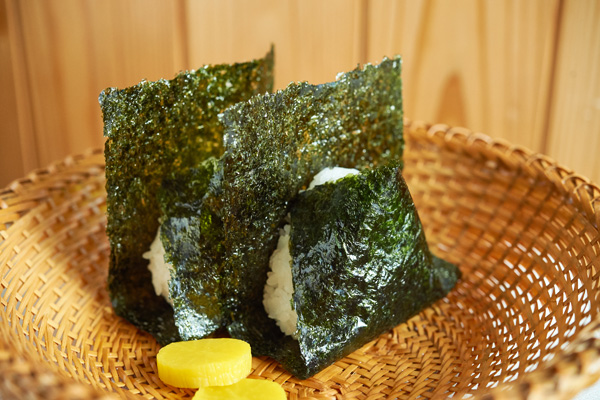
Because rice balls are made only with simple ingredients like rice, nori seaweed and the filling in the middle, he carefully selects what he uses and matches the ingredients with just the right amount of rice. This is the attention to detail he puts into making amazing rice balls.
Rice balls can be adapted into something that can be loved by people around the world
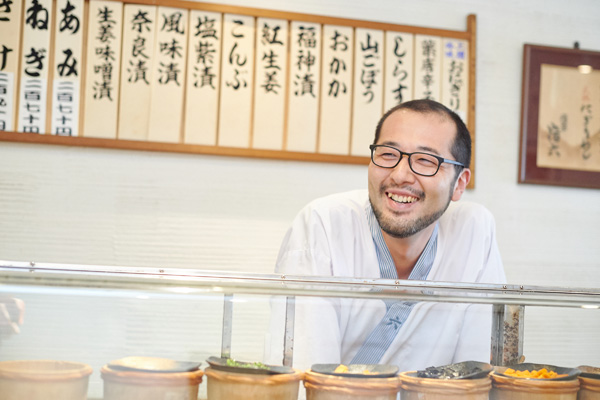
Many customers come from afar to enjoy Yadoroku’s rice balls. The restaurant’s motto for the long-cherished rice balls is quite simple: just make what is delicious.
“You cannot go wrong with rice balls. They make people feel comfortable and that is why people frequently eat them. The way I cook rice and how much salt I add changes from day to day. People can enjoy these little changes as well, but rice balls always give a sense of comfort and always tasty. That is what makes them so great.”
Miura makes rice balls at events and workshops as well. In 2015, he served his rice balls at EXPO Milano 2015.
“You can make a good rice ball as long as the rice and ingredients match. They can be the first Japanese food foreign people make, and can even be eaten by vegetarians. They have the potential to become popular around the world,” says Miura. People have different food preferences and this only becomes more complex as you factor in more countries. But rice balls are powerful: they go well with a wide variety of ingredients and can be prepared by just squeezing the ingredients and rice together.
Simple, but irresistible. Rice balls are filled with a charm that makes you want to bite into them.

